Water Belly in Chickens | A Guide to Prevention
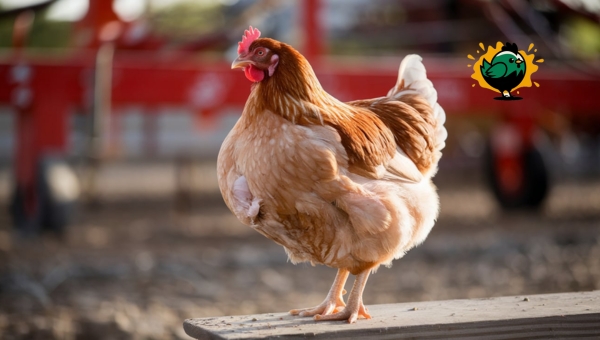
Finding your flock acting unusually, their vitality dwindling. This scenario might indicate a water belly in chickens, a condition that can be challenging for any poultry keeper. Water belly, also known as ascites, involves fluid accumulation in the abdomen, causing discomfort and health issues.
This article will delve into the causes, symptoms, diagnosis, treatment, and prevention of water belly. Understanding this condition is crucial for maintaining a healthy flock. Let’s explore how to recognize and manage water belly effectively, ensuring your chickens thrive.
Understanding Water Belly in Chickens
Water belly in chickens, technically known as ascites, is a condition characterized by an accumulation of fluid in the abdominal cavity.
This buildup often results from various factors affecting the chicken’s health. Chickens with water belly may display a swollen abdomen, which can lead to discomfort and health complications.
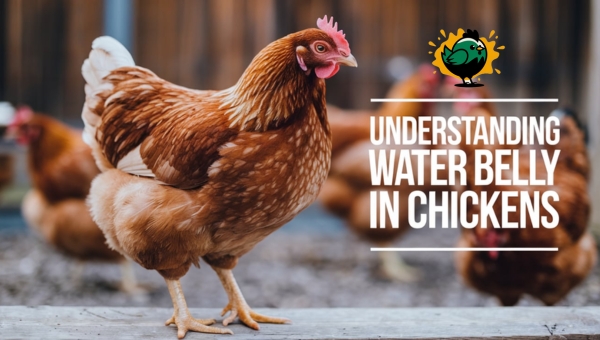
The condition is primarily seen in broiler chickens due to their rapid growth rates. Factors contributing to water belly include genetic predispositions and environmental stresses like inadequate ventilation or high altitudes, which can cause respiratory distress.
It’s crucial to monitor chickens for early signs of this condition, as timely intervention can help manage symptoms and improve their quality of life. Proper understanding and management practices are essential to prevent its occurrence.
Causes of Water Belly
Water belly in chickens is a condition that can stem from various causes. Understanding these causes is crucial for effective management and prevention. Let’s dive into some of the key factors contributing to this condition, which include both genetic and environmental components.
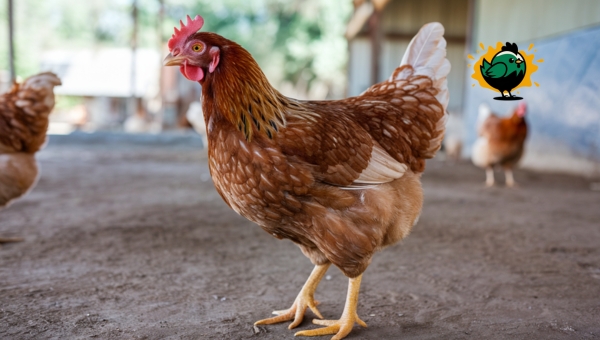
Genetic Factors
Genetics plays a significant role in the development of water bellies in chickens. Certain breeds may be more predisposed to this condition due to their genetic makeup.
Here are some important points regarding genetic factors:
- Breed Susceptibility: Some chicken breeds are naturally more prone to water belly due to inherited traits.
- Genetic Anomalies: Specific genetic mutations can impact the chicken’s ability to regulate fluid balance.
- Selective Breeding: Over generations, selective breeding for desirable traits might inadvertently increase the risk of water belly.
Environmental Conditions
The environment in which chickens are raised can also contribute significantly to the onset of water belly. Environmental factors can affect both the physical and physiological health of chickens.
Consider the following environmental influences:
- Temperature Fluctuations: Extreme temperatures, whether too hot or too cold, can stress chickens and lead to fluid accumulation.
- Poor Ventilation: Insufficient airflow in chicken coops can lead to respiratory issues, increasing the risk of water belly.
- Nutritional Deficiencies: Lack of essential nutrients in a chicken’s diet can weaken their overall health, making them more susceptible to this condition.
Understanding these causes allows for better management practices, aiming to reduce the incidence of water belly in chicken populations.
Also Read: How to Clean Chicken Like a Pro? Essential Tips
Symptoms of Water Belly
Understanding the symptoms of water belly in chickens is vital for timely intervention. Recognizing these signs early can significantly impact the health and well-being of your chickens. We’ll explore both physical signs and behavioral changes that may indicate water belly.
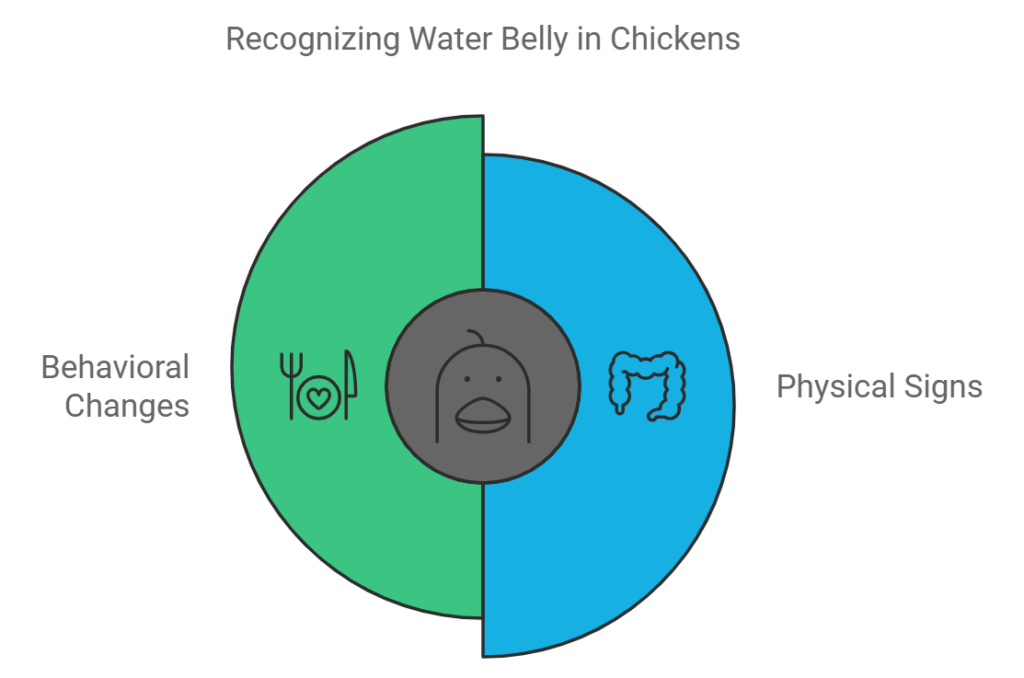
Physical Signs
Physical indicators of water belly in chickens can be quite telling. Here are some key signs to watch for:
- Swollen Abdomen: A noticeable swelling in the lower belly area is a common physical sign.
- Discoloration: The skin around the abdomen may appear bluish or darkened due to fluid accumulation.
- Labored Breathing: Difficulty in breathing can occur as the fluid buildup puts pressure on internal organs.
Behavioral Changes
Behavioral changes can often signal the presence of water belly in chickens. Look out for the following:
- Lethargy: Affected chickens may become less active and appear sluggish.
- Reduced Appetite: There may be a noticeable decrease in eating habits.
- Isolation: Chickens might separate themselves from the flock, seeking solitude.
By monitoring these symptoms closely, chicken owners can take prompt action to address and manage water belly effectively.
Diagnosing Water Belly
Diagnosing water belly in chickens is essential to manage and treat the condition effectively. The process involves a series of steps to ensure accurate identification and to rule out other potential health issues.
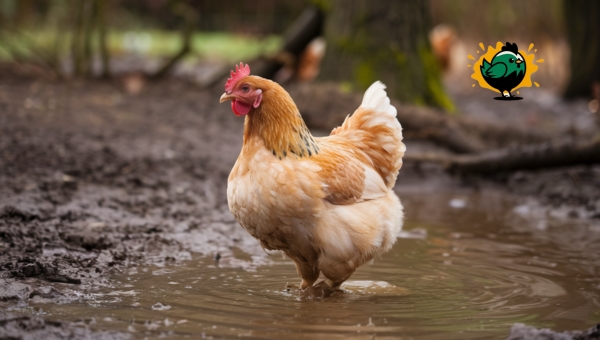
Here is a detailed guide on how to accurately diagnose water belly in chickens:
- Observation: Start by closely monitoring your chickens for any physical or behavioral changes. Look for signs such as an enlarged, swollen abdomen or changes in movement and behavior.
- Physical Examination: Gently examine the chicken’s abdomen. Feel for any unusual fluid accumulation, which can be a sign of water belly. The presence of fluid can often be detected by a distinct swelling in the lower abdomen.
- Auscultation: Use a stethoscope to listen to the internal sounds of the chicken’s abdomen. An unusual sound pattern can help identify fluid build-up.
- Fluid Sampling: If swelling is present, a veterinarian may perform a procedure to extract fluid from the abdomen. This fluid can be analyzed to confirm the presence of a water belly.
- Blood Tests: Conduct blood tests to check for underlying health issues that might be causing the condition. These tests can reveal liver function anomalies or other problems linked to water belly.
- Veterinary Consultation: Consult with a veterinarian for a comprehensive diagnosis. They can provide expert insights and recommend further diagnostic tests if needed.
By following these steps, you can accurately diagnose water belly in chickens and take the necessary actions to address this health concern.
Treatment Options for Water Belly
Addressing the water belly in chickens requires a thoughtful approach to alleviate symptoms and promote recovery. Treatment can range from medical interventions to home-based remedies. It is important to understand the options available to provide the best care for affected chickens. Let’s explore these options.
Medical Interventions
Medical treatments can be essential for managing water belly in chickens. Here are some key methods:
- Diuretics: These medications help reduce fluid buildup in the abdomen by promoting urine production.
- Antibiotics: In cases where infection is present, antibiotics may be prescribed to address any underlying bacterial issues.
- Surgical Procedures: In severe instances, a veterinarian might perform surgery to drain excess fluid, providing relief.
- Regular Monitoring: Ongoing veterinary check-ups are crucial to assess the chicken’s progress and adjust treatments as needed.
Home Remedies
For those seeking more natural approaches, several home remedies can help alleviate symptoms of water belly:
- Dietary Adjustments: Introduce a low-sodium diet to help manage fluid retention.
- Herbal Supplements: Herbs like dandelion and parsley may act as natural diuretics, aiding in fluid reduction.
- Hydration Management: Ensure chickens have access to clean, fresh water, but monitor their intake to prevent excess fluid accumulation.
- Comfortable Environment: Provide a stress-free space with adequate warmth to support recovery.
By considering these treatment options, chicken owners can make informed decisions to support their birds’ health and well-being.
Also Read: Gardening with Chickens | Transform Your Green Space
Preventing Water Belly in Chickens
Ensuring the health of your chickens involves taking proactive steps to prevent conditions like water belly. Proper management in terms of diet and habitat plays a significant role in keeping your flock healthy. Let’s delve into how diet and habitat management can help reduce the risk of water belly in chickens.
Diet and Nutrition
A balanced diet is essential for maintaining the health of chickens and preventing water belly.
Here are some strategies to consider:
- Provide a balanced feed: Ensure the feed contains all necessary nutrients, including proteins, vitamins, and minerals.
- Limit salt intake: Too much salt can lead to fluid retention, so it’s important to monitor this in their diet.
- Ensure clean water: Access to clean and fresh water is crucial for their overall health.
- Incorporate herbs and supplements: Adding natural supplements can improve overall well-being and immune function.
Habitat Management
Creating a safe and comfortable environment for chickens can help minimize health issues like water belly.
Here are some key points for effective habitat management:
- Maintain clean living conditions: Regularly clean the coop to prevent the build-up of harmful bacteria.
- Provide adequate space: Ensure chickens have enough room to move freely, reducing stress and promoting good health.
- Control temperature and ventilation: Proper ventilation and temperature control help prevent respiratory issues.
- Implement pest control measures: Keep pests at bay to reduce the risk of infections and diseases.
By focusing on these elements, you can create a healthier environment for your chickens, lowering the chances of water belly and promoting overall well-being.
Conclusion
Understanding water belly in chickens is essential for any poultry keeper. This condition, if left unchecked, can lead to severe health issues within a flock. By recognizing its causes, symptoms, and treatment options, you can take proactive steps to safeguard your chickens’ health.
Implementing preventive measures, such as proper diet and habitat management, plays a crucial role in minimizing risks. Regular monitoring and timely intervention can make a significant difference in managing this condition effectively.
For more insightful articles on poultry care and management, be sure to explore the rest of our blog. Stay informed and keep your feathered friends healthy!
